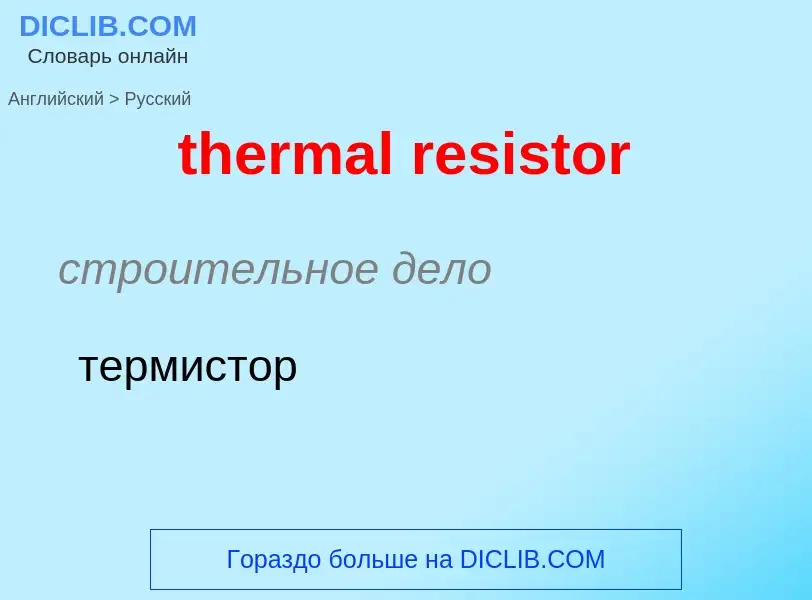Vertaling en analyse van woorden door kunstmatige intelligentie ChatGPT
Op deze pagina kunt u een gedetailleerde analyse krijgen van een woord of zin, geproduceerd met behulp van de beste kunstmatige intelligentietechnologie tot nu toe:
- hoe het woord wordt gebruikt
- gebruiksfrequentie
- het wordt vaker gebruikt in mondelinge of schriftelijke toespraken
- opties voor woordvertaling
- Gebruiksvoorbeelden (meerdere zinnen met vertaling)
- etymologie
thermal resistor - vertaling naar russisch
строительное дело
термистор
['θə:mistə]
общая лексика
термистор
термисторный
терморезистор
термосопротивление
существительное
электротехника
термистор
терморезистор
Definitie
Wikipedia
The thermal conductivity of a material is a measure of its ability to conduct heat. It is commonly denoted by , , or .
Heat transfer occurs at a lower rate in materials of low thermal conductivity than in materials of high thermal conductivity. For instance, metals typically have high thermal conductivity and are very efficient at conducting heat, while the opposite is true for insulating materials like Rockwool or Styrofoam. Correspondingly, materials of high thermal conductivity are widely used in heat sink applications, and materials of low thermal conductivity are used as thermal insulation. The reciprocal of thermal conductivity is called thermal resistivity.
The defining equation for thermal conductivity is , where is the heat flux, is the thermal conductivity, and is the temperature gradient. This is known as Fourier's Law for heat conduction. Although commonly expressed as a scalar, the most general form of thermal conductivity is a second-rank tensor. However, the tensorial description only becomes necessary in materials which are anisotropic.




